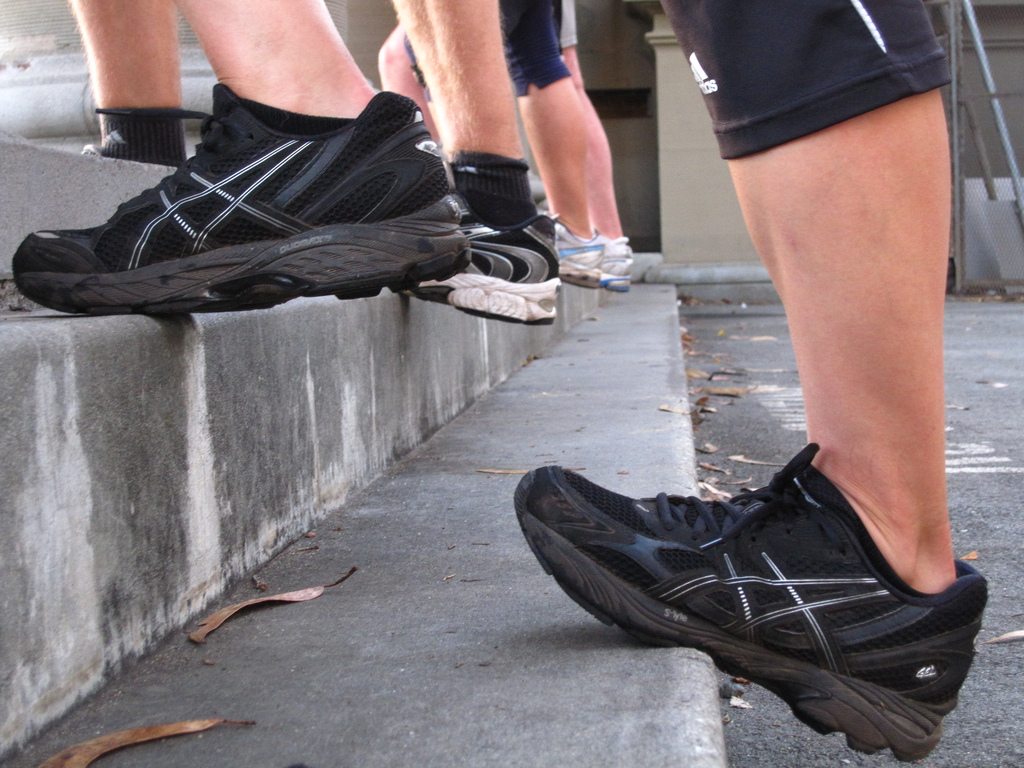Stretching should be an important part of your training regimen. It is often overlooked, but stretching is key to staying injury-free and flexible.
As a triathlete, the same muscles groups are used and repeatedly tighten up and this is the underlying cause to injuries. Here are the five key stretches that target the calves, quads, hip flexor, hamstrings and glutes. These core stretches should be fit into your weekly training sessions:
- Static Hip Flexor Stretch
On a soft surface, get into a sprinter’s starting position. Have your front foot on the ground (knee bent), and the rear leg back with your knee on the ground. Lean forwards into the stretch (keep your back straight) until you feel it in the hip flexor of the rear leg. Hold for 30 seconds. You may also feel a stretch in your calf too. When you’ve done the stretch twice, swap sides.
- Gluteal Stretch
Lying on your back with a towel or cushion under your head. Bring your knees towards your chest and cross one leg over the other. Clasp your hands under the thigh of the far leg and gradually pull it towards your head. This should increase the stretch on the near leg, in the glute area. Relax and gradually increase the stretch for 30 seconds, then swap sides.
- Hamstring Stretch
Lie on your back with one leg flat on the ground and the other leg up against a wall or door frame. Relax and gradually increase the stretch by gently pressing the thigh of the upper leg. Try not to let the other leg come off the ground. Do this for 30 seconds on each side.
- Kneeling Quad Stretch
Kneel on the floor with a cushion or towel under your knees. Make sure your legs are together and your back is straight. Relax your muscles and lean back to get a good stretch. Hold for 30 seconds.
- Calf Stretch
Find some stairs or a curb, grab onto something for balance and gently lower your heels off the edge with your knees straight. Feel the stretch and hold for 30 seconds. You can do both legs together or each leg individually. Try to do it again with the legs slightly bent to stretch out the lower calf muscles.
Becoming an expert in these basic stretches and then build in individual stretches to suit your body type. This will help keep you injury free and ready to compete.
Now the big question is when should you stretch and for how long?
- If you have an overly tight muscle group, you can’t really over stretch – stretching multiple times a day is not unheard of.
- Post training stretching should be done as part of the recovery of the training.
- Stretches should be done for 30 seconds to 2 minutes. Be sure to breathe, exhaling as you increase the stretch.
Stretching should be a key component to your triathlon training. If you’re having trouble finding a way to fit it into your training schedule, contact me, I’d be happy to help.
Train Right, Tri Right!
Coach MJ







